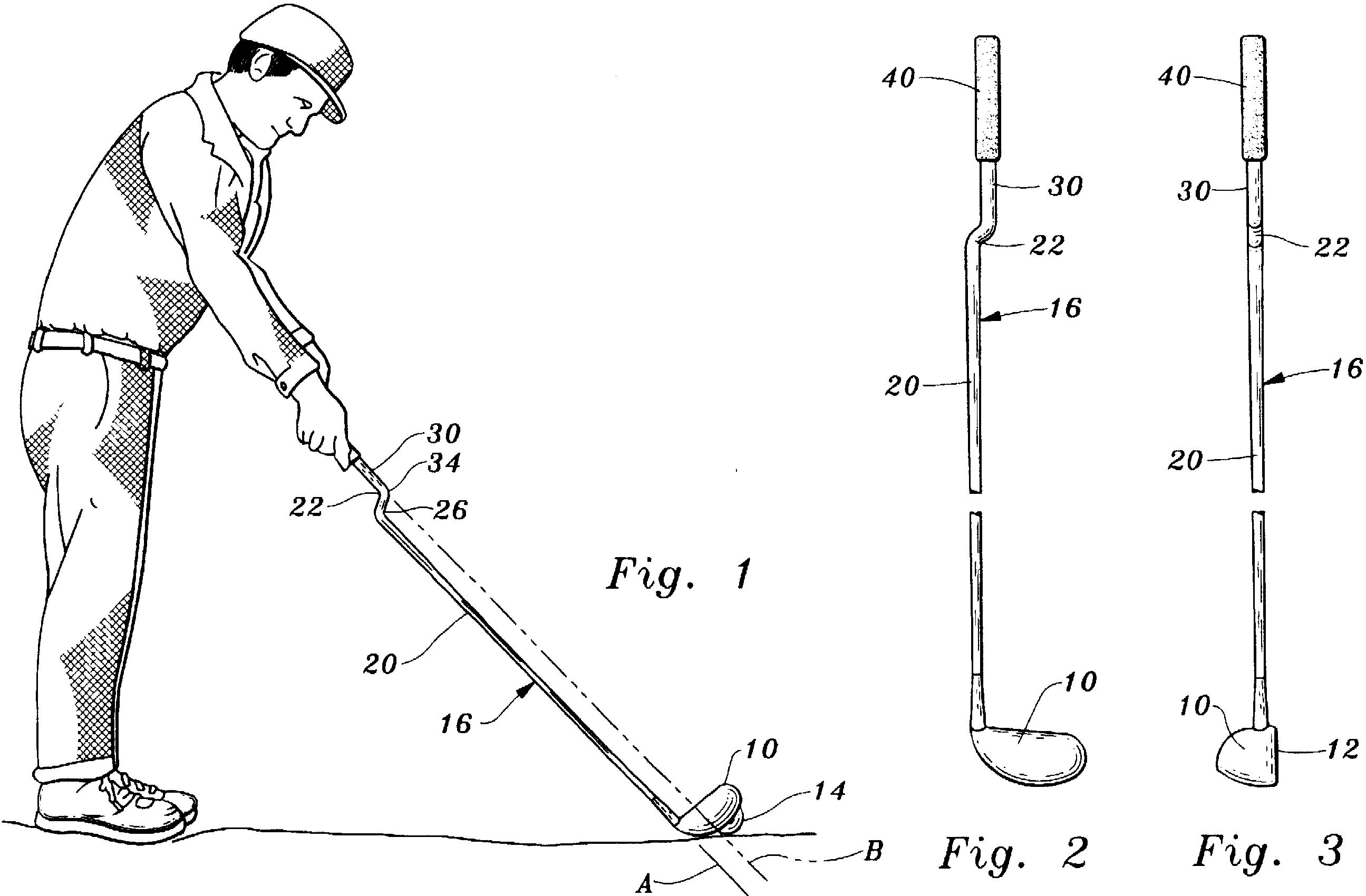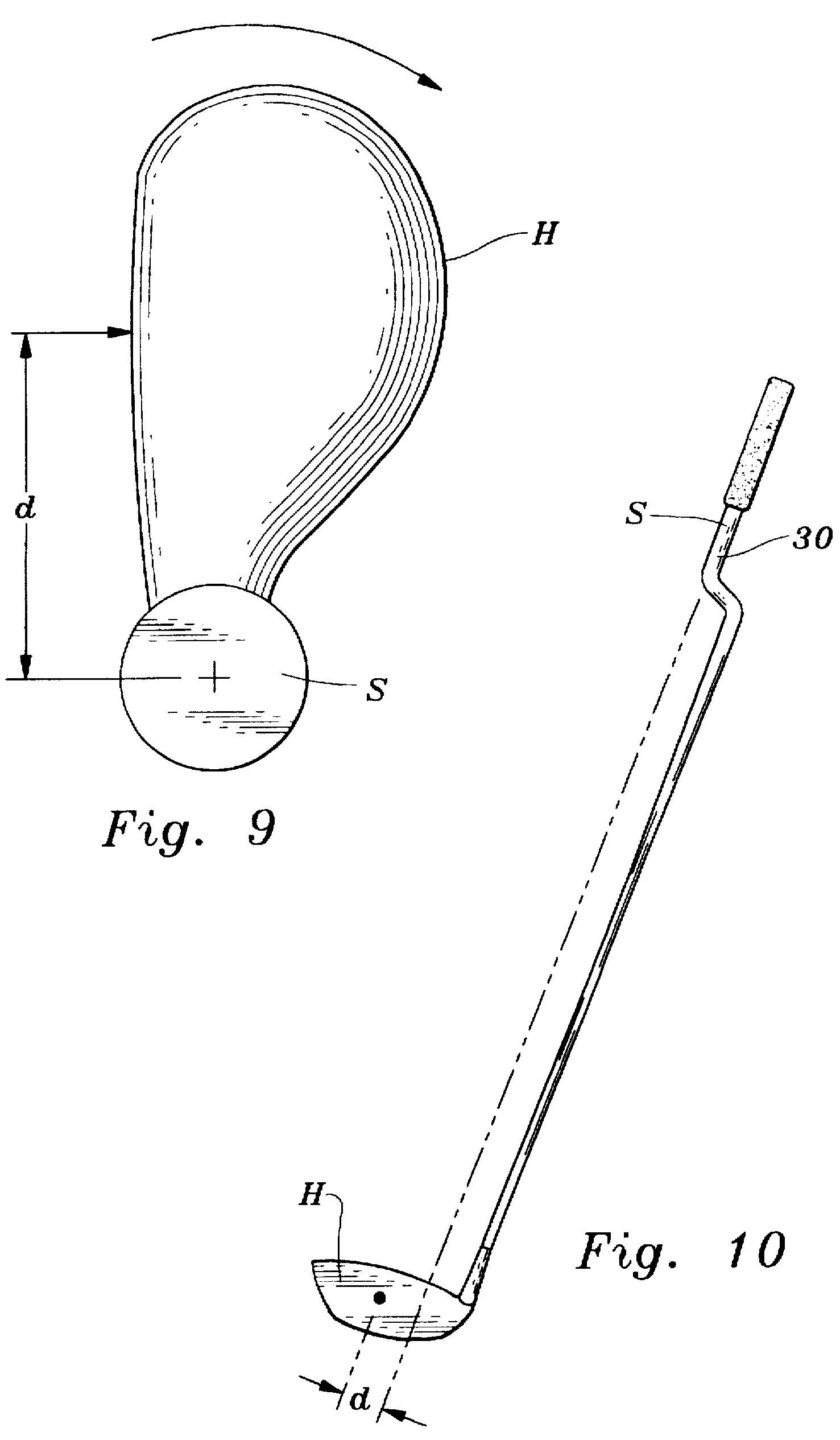Bizarre Golf Patent of the Week
Check out the beauty of a club found in USPN 5792002 titled “Golf Club.” Think it could help your game?


The patent explains:
The present invention relates to an improved golf club construction which has been found to dramatically improve a golfers’ swing and enable a golfer to hit a ball longer and straighter than with a conventional club. A golfer can “feel” the club head throughout the swing, more so than with a conventional club. This is accomplished without adding weights to the club. More particularly, the golf club of the present invention incorporates structural elements arranged in a particular manner which cooperate to provide improved club performance without the addition of weights to the club. In fact, the principles of the present invention may be carried out merely by forming bends in a unitary club shaft, said bends being of a specific character. Utilizing this approach, no additional weight is applied to the club. Added club weight can be undesirable under many circumstances for many golfers.
In effect, a swinging golf club is a dynamic energy system, the energy input being the golfer’s swing and the desired output being the transfer of energy to the ball.
During the swing, energy is inputted into the shaft when it flexes, however, virtually all of the energy is recovered when the shaft straightens, before it hits the ball, because the shaft is elastic and made from low energy loss (low hysteresis) material. In contrast, the golfer’s hands are formed of a high energy loss (high hysteresis) material.
The result of this is that energy put into the hands from twist of the club is not recoverable and therefore not available to be transferred to the ball with conventional clubs.
The golf club disclosed and claimed herein, on the other hand, is of such construction that it minimizes energy loss due to twisting. This is believed to account for the improved performance of the club disclosed and claimed herein as compared to conventional clubs. The club disclosed and claimed herein not only has been found to hit a ball consistently farther but also straighter as compared to ordinary straight shafted clubs.
The golf club of the present invention includes a golf head having a substantially planar golf ball engaging surface.
A club shaft is attached to the club head and extends upwardly from the club head, the club shaft including a substantially straight first club shaft segment extending upwardly from the club head along a first imaginary line. A substantially straight second club shaft segment adjoins and is connected to the first club shaft segment at a lower bend extending upwardly from and laterally relative to the first club shaft segment from the lower bend and defining an angle with the first club shaft segment at the lower bend.
The club shaft also includes a substantially straight third club shaft segment adjoining and connected to the second club shaft segment at an upper bend spaced from the first club shaft segment and extending upwardly from and laterally relative to the second club shaft segment from the upper bend and from the second club shaft segment along a second imaginary line spaced from and substantially parallel to the first imaginary line.
The third club shaft segment and the second club shaft segment define an angle substantially equal to the angle defined by the first club shaft segment and the second club shaft segment, the angles being within the range of from about 3 degrees to about 47 degrees.
The golf club also includes an elongated club handle connected to the third club shaft segment at a location spaced from the second club shaft segment. The club handle has a distal end and is offset relative to the first club shaft segment.
The first imaginary line intersects the ground at a location closer to a golfer holding the golf club by the club handle and swinging the golf club to move the first club shaft segment in a swing plane substantially at right angles to the substantially planar golf ball engaging surface to strike a golf ball than the location of intersection between the second imaginary line and the ground at the time of golf ball contact by the golf ball engaging surface.
Another golf invention that would be fun to take a few swings with.
Dave Dawsey – Keeping an Eye on Crazy Golf Products
PS – click here to check out other driver and wood design posts
